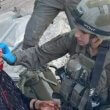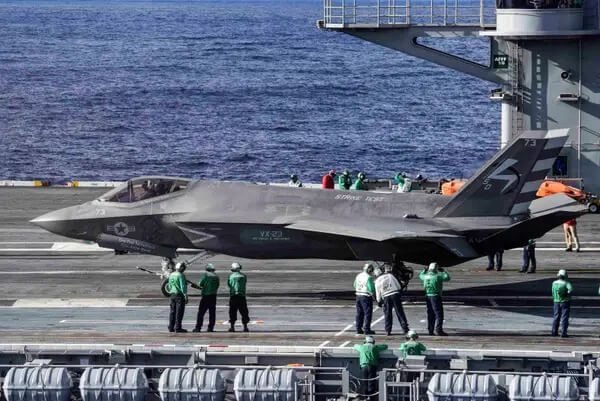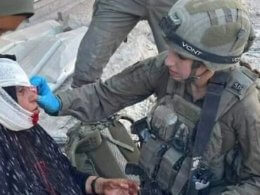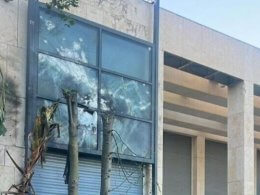Following last week's retaliatory response by U.S. forces against Iran-backed terrorist groups over a self-detonating drone attack that killed an American contractor and injured several American troops, the US Navy announced it would be extending the deployment of one of its Naval strike groups.
According to US Central Command spokesperson Colonel Joe Buccino, the decision to extend the deployment of the George HW Bush carrier strike group means that 5,000 American forces operating in the European Command area are not going to return home to the U.S. as scheduled and instead will be placed near Syria to “respond to a range of contingencies in the Middle East.”
The warship in Syria measures around 333 meters and contains over 100,000 tons, becoming one of the world's largest warships. It exceeds 30 knots in speed, has several nuclear devices, and works for several decades without refueling.
“The extension of the George HW Bush Carrier Strike Group is the right choice given the ever-present threat facing America and its allies in the Middle East. It is also a reminder that the US Navy, and armed forces in general, are under-resourced. From China to Russia, North Korea to Iran, the US is facing many threats,” explained Matthew RJ Brodsky, a Senior Fellow at the Gold Institute for International Strategy.
Colonel Buccino also mentioned to reporters the expedited deployment of a squadron of A-10 attack aircraft to Syria when many of the country's military forces were hoping for a withdrawal after several years of American deployment. In the past eight years, American troops have partnered with Kurdish militias to battle against the Islamic State (ISIS) and Iranian-backed terrorist fighters supporting the Assad regime.
“The message this sends to Iran and its proxies is that the US will remain engaged at some level. Unfortunately, I don't believe it sends a strong enough message of deterrence. Since Biden took office, Iran-backed forces have launched some 83 attacks on US personnel in Iraq and Syria,” Brodsky told The Foreign Desk.
Last week, US President Joe Biden warned Iran that the US would act forcefully to protect its troops. Pentagon officials say that around eight Iranian-backed militants died during the response to US airstrikes against several Iranian-linked bases in Syria, with officials from the Pentagon hailing the efforts as successful.
In response to the actions by America's Navy in Syria, a senior member of the Russian military described it as "provocative" and called on the US presence to be removed from the area, allowing for Moscow to have greater control in Damascus. The senior Russian officials also accused American forces of being spotted in locations outside the agreed zones that Turkey and Moscow are carrying out in Northern Syria.
According to reports, hundreds of ISIS fighters live in desolate areas where neither American-backed forces nor the Syrian Army have any influence.
Brodsky notes that the Russians have “have wanted to control Syria since they entered the conflict in September 2015.”
“Throughout the Trump administration, they wanted to retake northeastern Syria from the US and SDF forces who held around 90% of Syria's hydrocarbons. They tried several times, with Iranian-backed forces to retake those areas and failed,” he explained.
Speaking to the Russian news agency Tass, the head of the Russian Reconciliation Centre for Syria, Rear Admiral Oleg Gurinov, said that American forces were in areas outside the agreed zones.
"Provocative actions on the part of US armed forces units have been noted in Hasaka province," Gurinov told Tass. The Russian admiral also noted that the Russian side has protested with the coalition.
Following the breakout of the Syrian Civil War in 2011 against the Assad regime, Russia and Iran’s regime sent forces to deter uprisings against the Syrian President, establishing a strong military presence throughout the country. From 2011 to 2015 to today, Assad's regime has been alive and well in Syria, with members of the Russian military and the Islamic Republic of Iran's Revolutionary Guards Corps (IRGC) using Damascus as a staging ground against American-backed coalition forces and Israel.
“The Biden administration appears to have Iran on hold and Syria is a back burner issue,” Brodsky told The Foreign Desk.
He noted that Iran and Russia's goal is to “evict the thousand or so Americans from Syria. That is why Iran will continue to target American assets throughout the region in the hope that it will produce a US withdrawal, rather than a strike similar to the one Trump launched, which killed IRGC Qods Force commander Soleimani.”
Brodsky notes that unless the Biden administration convinces the regime in Tehran that the price of attacking US interests is prohibitive, “expect these kinds of attacks to continue.”
“This will become harder, the closer Iran gets to producing nuclear weapons,” he stated.
Following Russia's invasion of Ukraine in February 2022, Assad has publicly declared his support for Putin's invasion, vowing to send the Russian President aid as his military forces continue to face pushback by Ukrainian troops and economic sanctions from the international community. In Tehran, the IRGC and its terrorist proxies continue to use Damascus to smuggle weapons to Hezbollah in Lebanon and Hamas in the Gaza Strip, train terrorist fighters, and attack American and Israeli forces without any fear.
In response to Iran's growing presence in Syria, American and Israeli forces have attacked Syrian weapon depots, IRGC officials, and Islamic terrorist groups supported by Iran, sending a message to the regime to cease its terrorist activities in Damascus.
According to Pentagon reports, since President Joe Biden took office in 2020, around 83 attacks in Iraq and Syria have occurred, with only four retaliations occurring. In Congress, Republican lawmakers in the House and Senate have called on the administration to act more forcefully against the Iranian regime and cease any negotiations with officials from Tehran over reviving the 2015 nuclear agreement.
Related Story: U.S. Forces Intercept Thousands of Assault Rifles, Ammo, Anti-Tank Missiles from Iran










